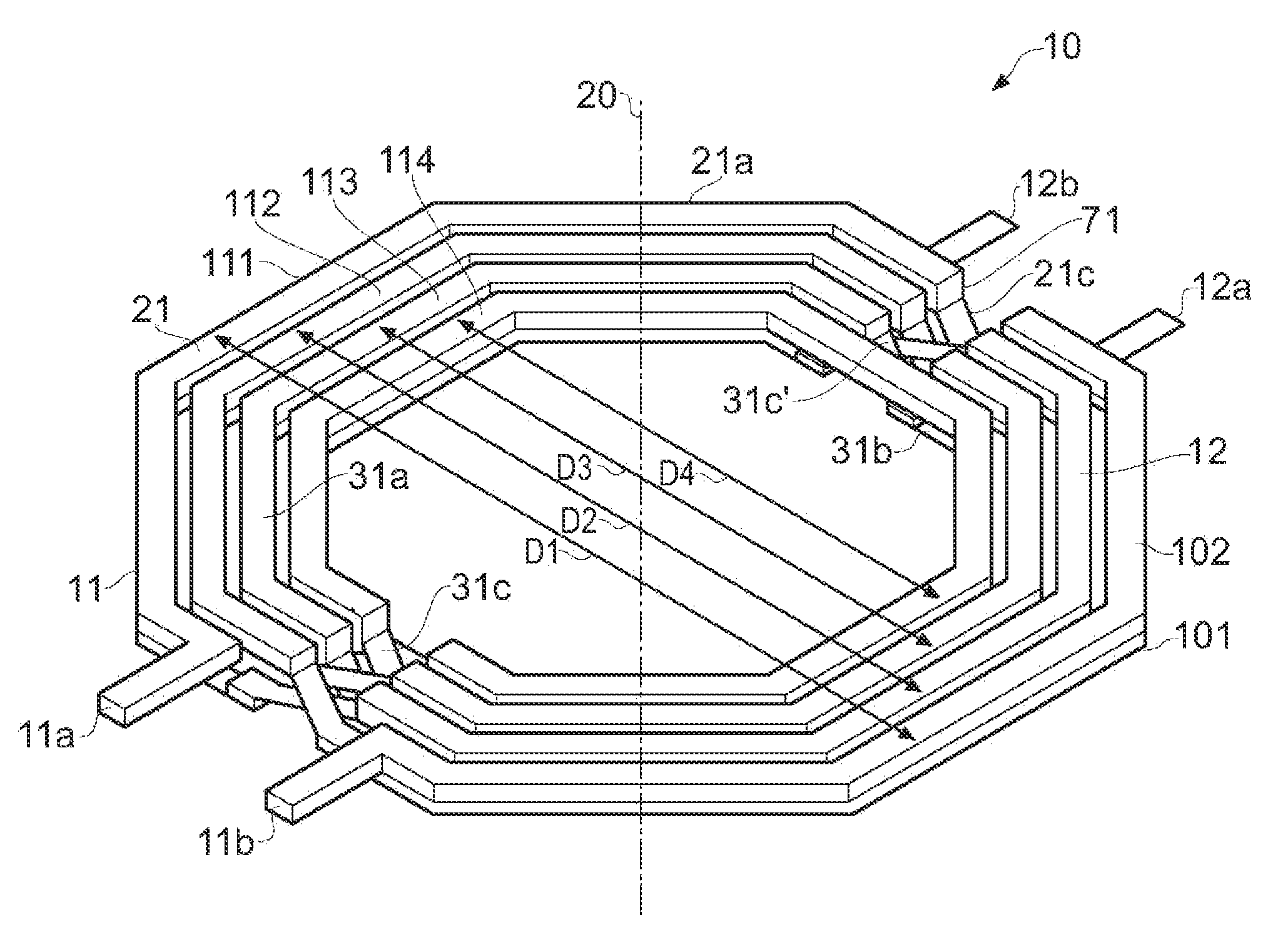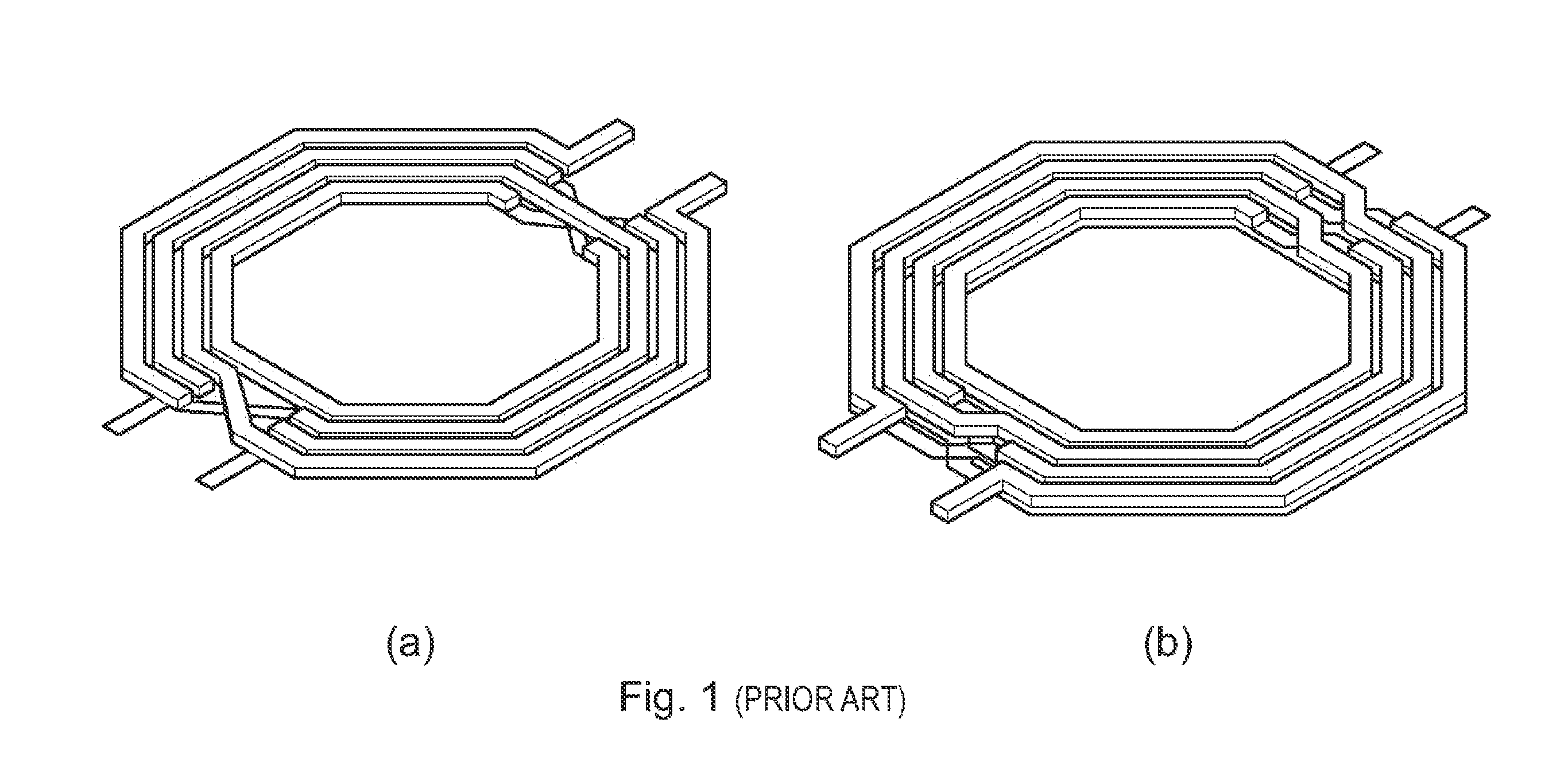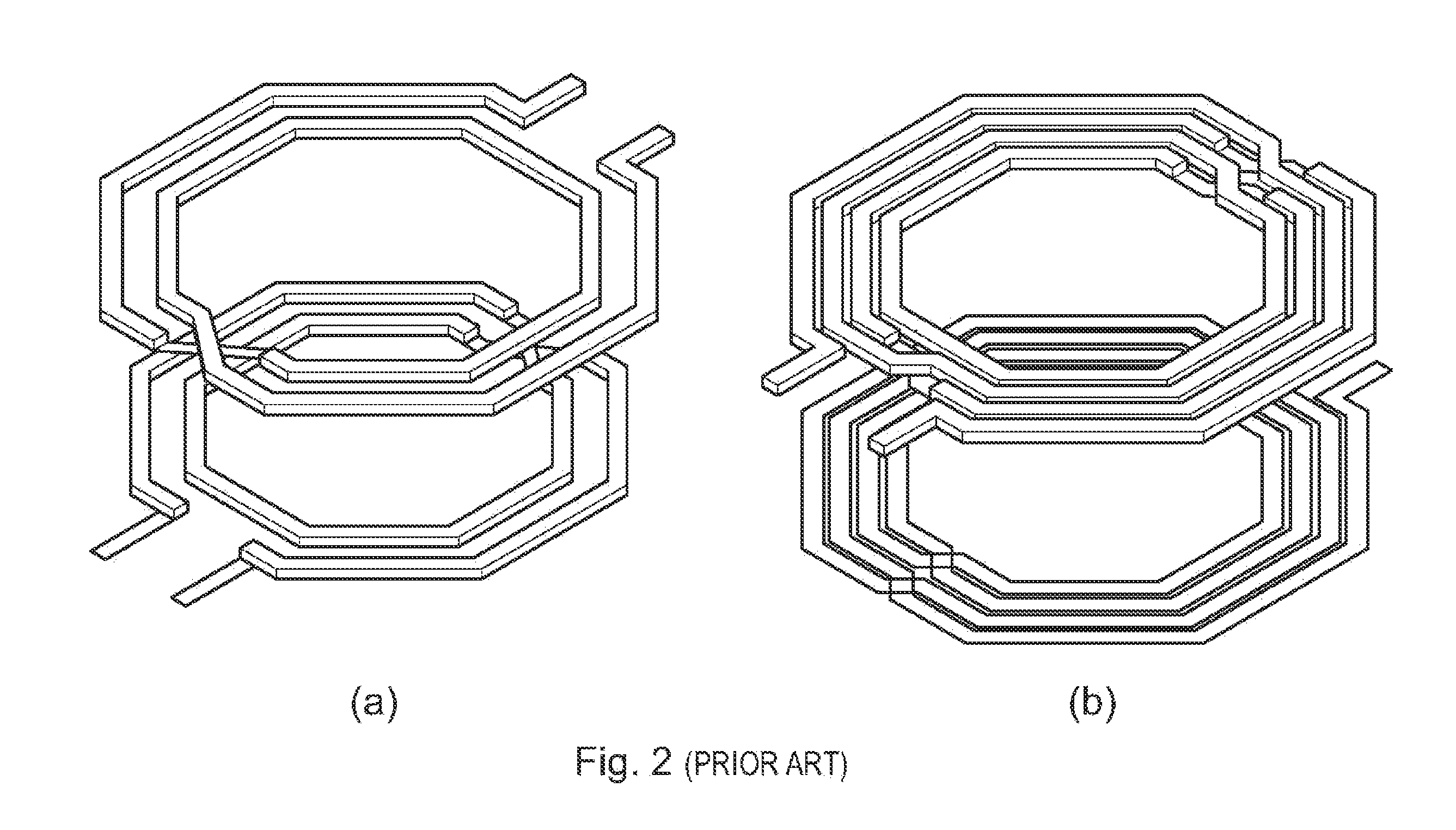Integrated transformer and method of fabrication thereof
a technology of integrated transformers and transformers, applied in the direction of electromagnets, printed inductances, coils, etc., can solve the problems of inability to easily integrate fully integrated amplifiers using silicon as substrates, inability to consider wireless applications, and high cost of techniques,
- Summary
- Abstract
- Description
- Claims
- Application Information
AI Technical Summary
Benefits of technology
Problems solved by technology
Method used
Image
Examples
first embodiment
[0078]FIG. 4 shows an integrated transformer structure 10 according to the invention. The structure 10 has a primary coil 11 and a secondary coil 12. In one embodiment, each of the coils is provided with four turns through substantially 360°. Two turns of each coil are provided on each of two different lateral levels.
[0079]The primary coil 11 has a pair of terminals 11a, 11b at opposed ends of the coil. The secondary coil has a corresponding pair of terminals 12a, 12b at opposed ends. The terminals of the coils allow electrical connection of the structure to a circuit.
[0080]It will be appreciated by persons skilled in the art that embodiments of the invention are not limited to a primary coil and a secondary coil each having four turns. One or each of the coils can have a greater or smaller number of turns. Furthermore, the coils do not necessarily have to have the same number of turns.
[0081]In addition, the shape of each coil need not be the same, although advantageously the coils ...
second embodiment
[0121]FIG. 8 shows a structure 210 according to the invention.
[0122]FIG. 9 is an exploded view of the structure of FIG. 8 and shows two coils (a primary coil 211 and a secondary coil 212) that comprise the structure of FIG. 8. The primary coil has a pair of terminals 211a, 211b. The secondary coil has a corresponding pair of terminals 212a, 212b. The terminals of the coils allow electrical connection of the structure to a circuit. The primary and secondary coils each have four turns through substantially 3600.
[0123]As discussed in the context of the first embodiment, it will be appreciated by persons skilled in the art that embodiments of the invention are not limited to a primary coil and a secondary coil each having four turns. One or each of the coils of the second embodiment can have a greater or smaller number of turns. Furthermore, the coils do not necessarily have to have the same number of turns.
[0124]Furthermore, the shape of each coil need not be the same, although advanta...
third embodiment
[0167]FIG. 17 is a cross-sectional schematic diagram showing the metallisation layers used to construct an integrated transformer structure according to the invention.
[0168]In a structure according to the third embodiment, portions of a coil on the second lateral level are formed by metallisation layer TM, whilst portions of a coil on the first lateral level are formed by metallisation layer TM-1. In structures according to the first and second embodiments, portions of a coil on the second lateral level are formed by metallisation layer TM, whilst portions of a coil on the first lateral level are formed by metallisation layer TM-4. Thus, structures according to the third embodiment have the advantage that the distance between the first and second lateral levels is lower, thereby increasing the amount of electromagnetic coupling between the primary and secondary coils.
[0169]The feature of a lateral offset between contact points according to the third embodiment is illustrated in FIGS...
PUM
| Property | Measurement | Unit |
|---|---|---|
| width | aaaaa | aaaaa |
| distance | aaaaa | aaaaa |
| diameter D1 | aaaaa | aaaaa |
Abstract
Description
Claims
Application Information
 Login to View More
Login to View More - R&D
- Intellectual Property
- Life Sciences
- Materials
- Tech Scout
- Unparalleled Data Quality
- Higher Quality Content
- 60% Fewer Hallucinations
Browse by: Latest US Patents, China's latest patents, Technical Efficacy Thesaurus, Application Domain, Technology Topic, Popular Technical Reports.
© 2025 PatSnap. All rights reserved.Legal|Privacy policy|Modern Slavery Act Transparency Statement|Sitemap|About US| Contact US: help@patsnap.com



